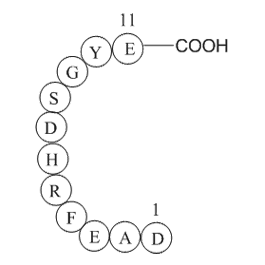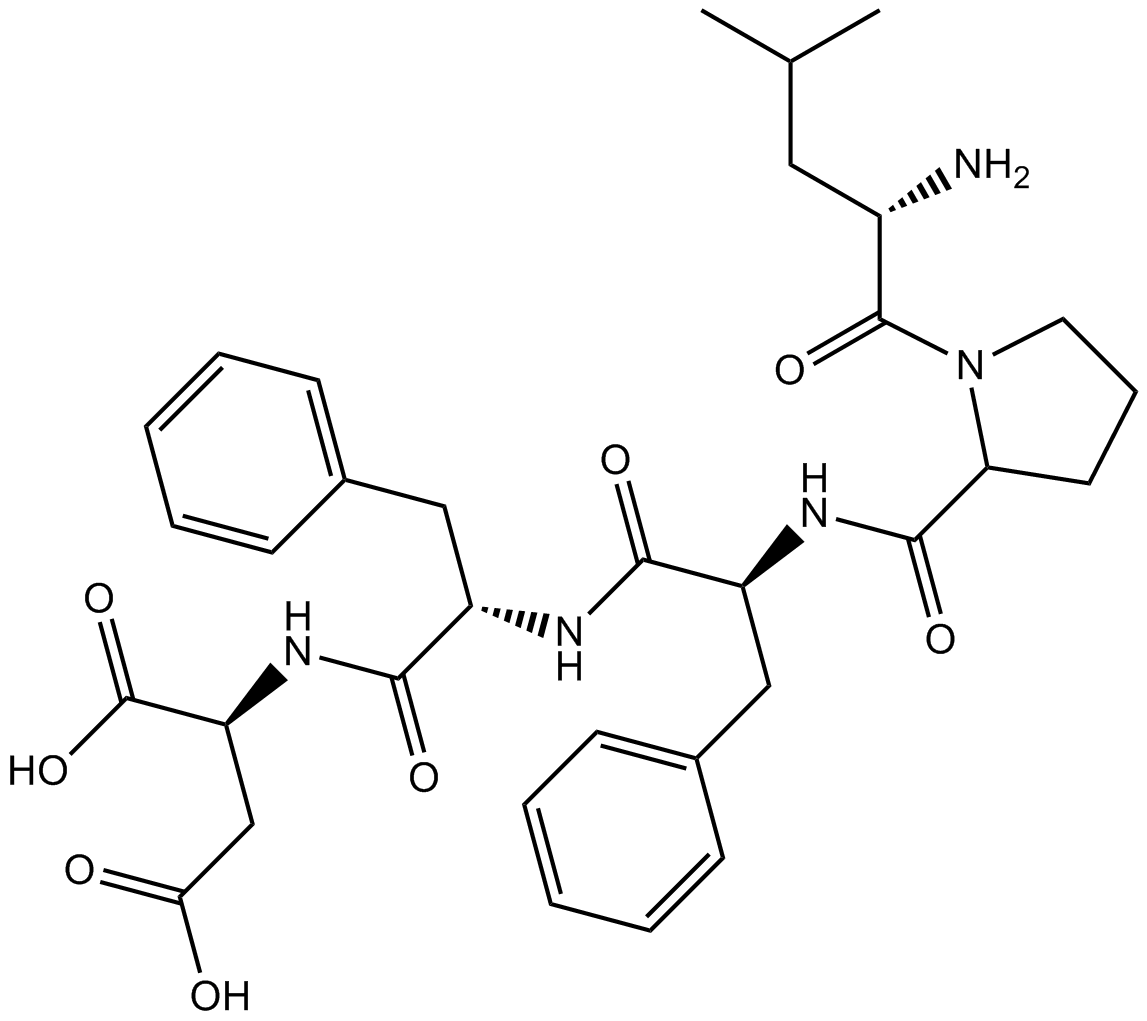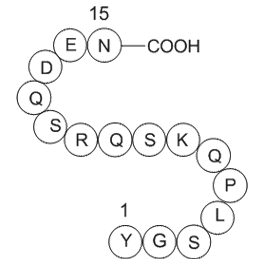Amyloid Beta-Peptide (12-28) (human)
Amyloid Beta-Peptide (12-28) (human) (CAS: 107015-83-8) is a synthetic fragment derived from the amyloid precursor protein (APP), corresponding to amino acid residues 12 to 28 of the human amyloid β-peptide (Aβ). This peptide is frequently utilized in research to investigate the structural and biological properties of Aβ, which constitutes the major protein component of amyloid plaques found in Alzheimer’s disease and is implicated in both parenchymal and cerebrovascular amyloid deposition. Studies employing Aβ peptides support their role in neurotoxicity and cerebrovascular pathology associated with Alzheimer’s disease, facilitating the development of therapeutic strategies and mechanistic understanding of amyloidogenic processes.
References:
1. Lahiri DK, Maloney B (September 2010). "Beyond the signaling effect role of amyloid–β42 on the processing of AβPP, and its clinical implications". Exp. Neurol. 225 (1): 51–4.
2. Hardy J, Duff K, Hardy KG, Perez-Tur J, Hutton M (September 1998). "Genetic dissection of Alzheimer's disease and related dementias: amyloid and its relationship to tau". Nat. Neurosci. 1 (5): 355–8.
| Physical Appearance | A solid |
| Storage | Desiccate at -20°C |
| M.Wt | 1955.2 |
| Cas No. | 107015-83-8 |
| Formula | C89H135N25O25 |
| Synonyms | Val-His-His-Gln-Lys-Leu-Val-Phe-Phe-Ala-Glu-Asp-Val-Gly-Ser-Asn-Lys |
| Solubility | ≥195.5 mg/mL in DMSO; insoluble in EtOH; ≥59.8 mg/mL in H2O |
| SDF | Download SDF |
| Shipping Condition | Small Molecules with Blue Ice, Modified Nucleotides with Dry Ice. |
| General tips | We do not recommend long-term storage for the solution, please use it up soon. |
Quality Control & MSDS
- View current batch:
Chemical structure














